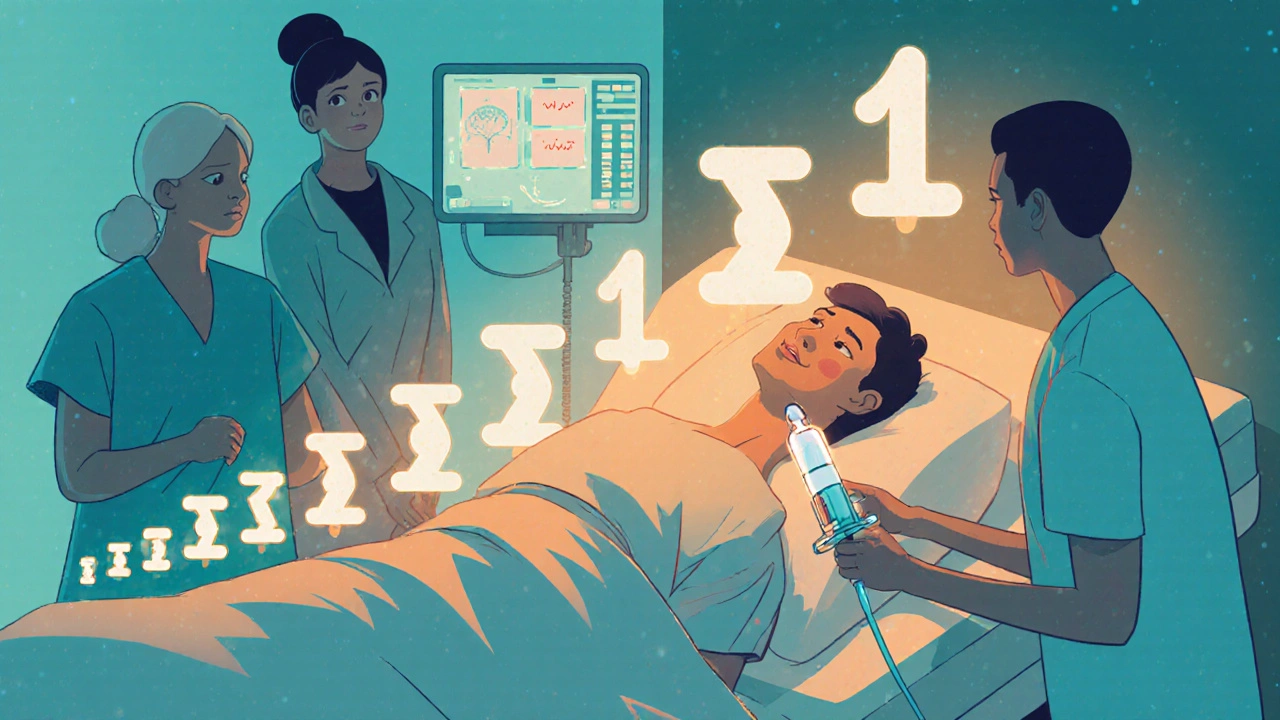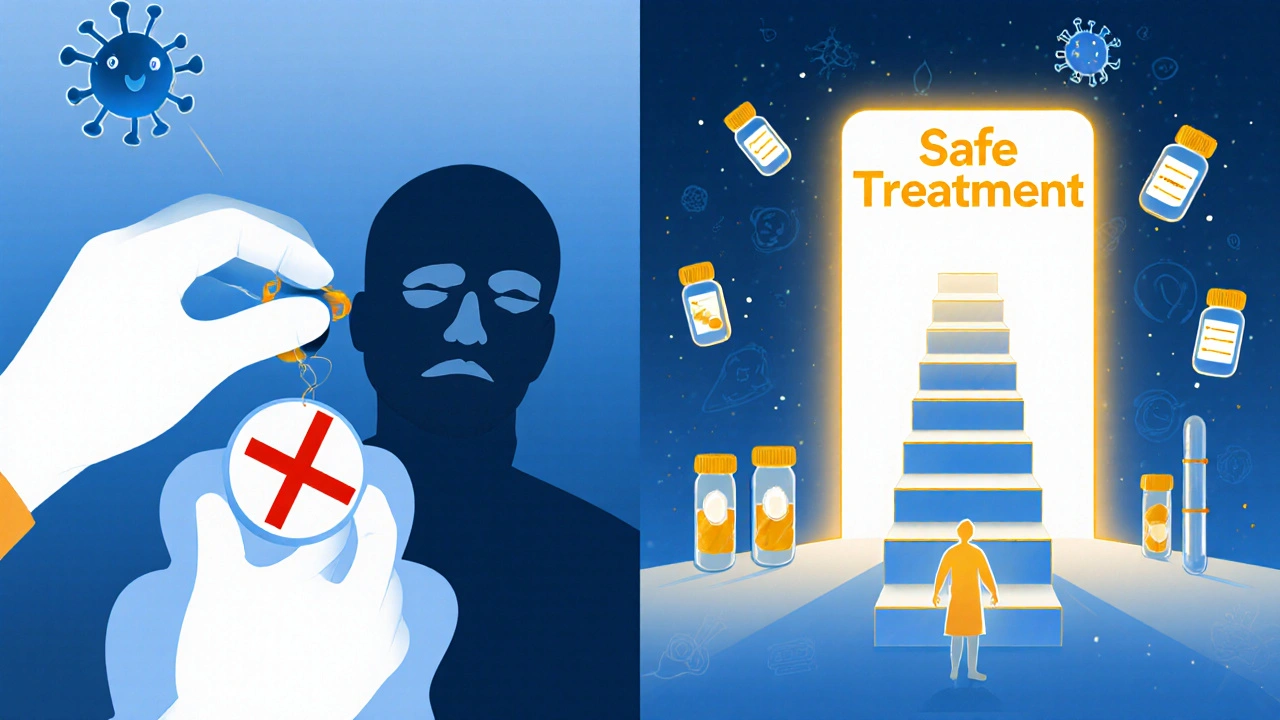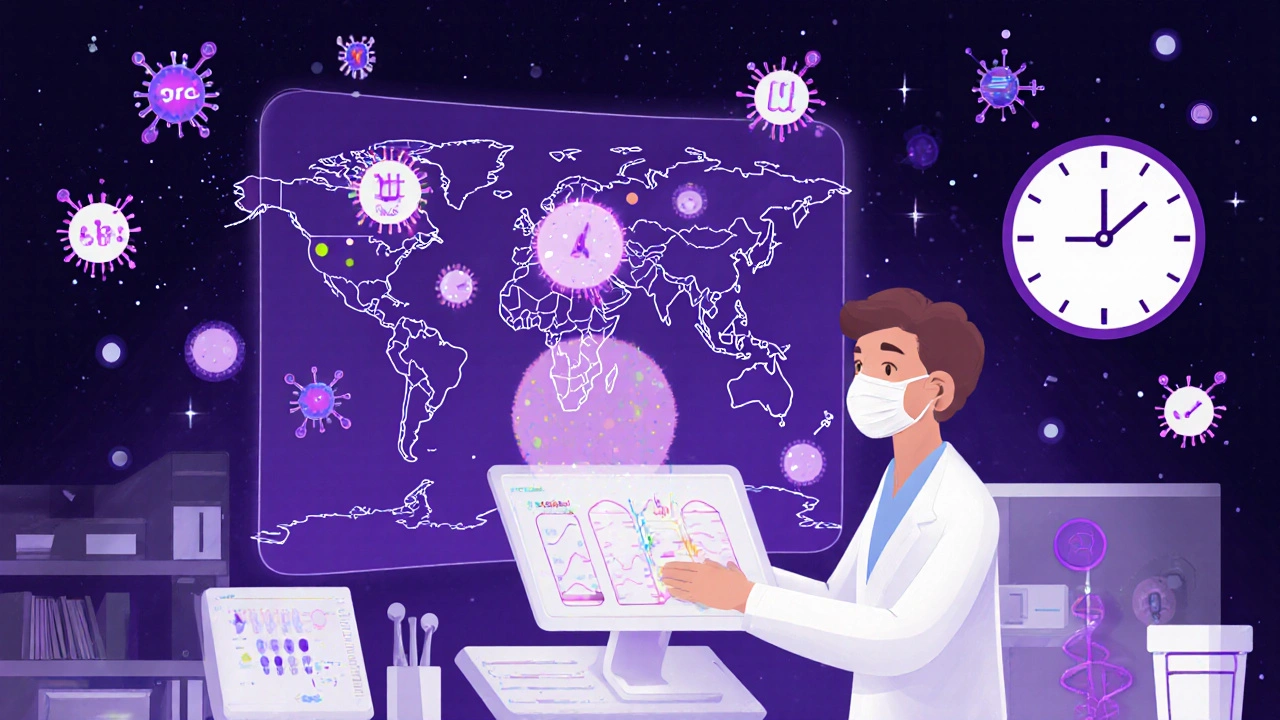
When a life-saving medication triggers a dangerous allergic reaction, what do you do? Stop the treatment? Risk the disease worsening? Or find a way to safely use the drug anyway? That’s where drug desensitization comes in. It’s not a cure for allergies. It’s not a trick. It’s a carefully controlled medical process that lets people who’ve had severe reactions to essential drugs - like antibiotics, chemotherapy, or monoclonal antibodies - receive those drugs without going into anaphylaxis. And it works. In fact, when done right, it succeeds in 95% to 100% of cases.
Drug desensitization is the process of slowly introducing a medication to someone who has had a serious hypersensitivity reaction - like hives, swelling, low blood pressure, or trouble breathing - so their body temporarily stops reacting to it. This isn’t about building long-term tolerance. It’s about creating a short-term window where the drug can be given safely, usually for one course of treatment.
It’s not used for every reaction. If you broke out in a rash after taking amoxicillin five years ago, you probably don’t need it. But if you’re fighting a life-threatening infection and penicillin is the only antibiotic that works - or if you have cancer and the only chemo that shrinks your tumor is causing a reaction - then desensitization becomes the only real option.
The technique was developed in the 1960s at the National Institutes of Health and refined by Dr. Mariana Castells at Brigham and Women’s Hospital. Today, her rapid desensitization protocol is the gold standard used in hospitals worldwide.
Doctors don’t jump to desensitization. It’s only considered when:
For example:
According to a 2022 study at Brigham and Women’s Hospital, 42 patients with confirmed penicillin allergies underwent rapid desensitization. All completed their full antibiotic course. None had a life-threatening reaction. Only 8% had mild symptoms like flushing or itching.
Not all reactions are the same. That’s why there are two main protocols.
RDD is for immediate reactions - the kind that happen within minutes or hours. Think: hives, wheezing, drop in blood pressure. These are usually IgE-mediated, meaning your immune system overreacts fast.
The standard RDD protocol starts with a tiny dose - often 1/10,000th of the full therapeutic amount. Every 15 minutes, the dose doubles. After 12 steps, you reach the full dose. The whole process takes 4 to 6 hours. It’s done in a hospital, under constant monitoring: blood pressure, oxygen levels, heart rate, and breathing checked after every dose.
It’s used mostly for IV drugs - antibiotics, chemo, monoclonal antibodies. It’s fast. It’s effective. And it’s the only way many cancer patients can keep getting treatment.
SDD is for delayed reactions - the kind that show up hours or days later. Think: severe skin rashes, blistering, fever. These are T-cell mediated, like in Stevens-Johnson syndrome (though desensitization is NOT used for that).
SDD is slower. Doses are given every 1 to 2 hours, sometimes over 2 to 3 days. It’s mostly used for oral drugs like aspirin, NSAIDs, or certain antibiotics. There’s no universal protocol yet - dosing intervals and increments vary by drug and center.
For example, aspirin desensitization for nasal polyps or asthma can take 48 hours. Patients start with a 1-mg dose, then increase by 1 mg every hour until they hit 325 mg. It’s not easy, but for some, it’s the only way to control their symptoms.
Some doctors try to avoid desensitization by switching to another drug or giving antihistamines and steroids before the infusion.
But here’s the problem:
Desensitization isn’t perfect. But when the right drug is the only one that works, it’s the most reliable path forward.

Desensitization saves lives - but it’s not for everyone.
It’s strongly discouraged in cases of:
The American Academy of Allergy, Asthma & Immunology (AAAAI) gives a strong recommendation against desensitization for these conditions. The risk isn’t worth it.
It’s not a walk-in procedure. Desensitization requires:
Before it starts, your history is reviewed. Skin tests or blood tests might be done to confirm the allergy. Then:
During the process, you might feel warm, flushed, or itchy. That’s common. If you develop trouble breathing, low blood pressure, or swelling, the team stops and treats you - then may continue later if safe.
After reaching the full dose, you’re usually observed for another hour. Then you’re sent home - but only if you’re stable. You’ll need to take the rest of your course as prescribed, because the tolerance doesn’t last.
This is the biggest catch: desensitization is temporary.
If you stop taking the drug for more than 48 hours, your body forgets it’s supposed to tolerate it. The next time you need it - even weeks later - you’ll need to go through the whole process again.
That’s why it’s not used for daily medications like aspirin for heart protection. But for a 10-day antibiotic course or a 6-week chemo cycle, it’s perfect.
Patients often say: “I thought I’d never get to take this drug again.” One oncology patient told researchers, “It felt like I got my life back.”

Desensitization is safe when done right. But mistakes happen.
Common errors:
Solutions exist:
Always ask: Is this being done by an allergist in a hospital with full emergency support? If not, walk away.
Desensitization is expensive. Each procedure takes about 4.2 nursing hours and 1.8 physician hours. Medicare and other insurers only cover 60% of the cost. Many community hospitals can’t afford it.
That’s why adoption is high in academic centers (85%) but low in community hospitals (35%).
The good news? The field is evolving.
Dr. Castells predicts that within five years, genetic and immune profiling will tell doctors exactly who needs desensitization - and which protocol will work best.
With antibiotic resistance killing 35,000 Americans each year, and new cancer drugs causing reactions in 25% of patients, desensitization isn’t a niche trick anymore. It’s becoming essential care.
Reddit user u/PenicillinWarrior wrote: “After 20 years of being told I’m allergic, the 4-hour protocol let me finally take the best antibiotic for my osteomyelitis. I didn’t even get a rash.”
Another, u/ChemoSurvivor, shared: “My hospital didn’t have the right dilution kits. Took three tries before they got it right. I was terrified - but it worked.”
These aren’t rare. In surveys, 92% of cancer patients who went through desensitization called it “life-saving.”
But they also say: “It was scary.” “I cried before it started.” “I didn’t sleep the night before.”
That’s normal. The fear is real. But so is the outcome.
14 Responses
So this is basically like training your immune system to ignore a bomb until it’s too late to detonate? Wild. I’ve seen this done for chemo patients and it’s insane how calm the nurses are during it. One guy was reading a comic book during the whole 5-hour process. No joke.
This is so cool! I work in a clinic in Mumbai and we just started doing this for TB patients who react to rifampicin. It’s not easy, but seeing someone walk out after their last dose? Pure joy. 🙌 No more fear, just medicine that works.
While the clinical efficacy of rapid desensitization protocols has been empirically validated through multiple peer-reviewed studies, including those conducted at Brigham and Women’s Hospital under the auspices of Dr. Castells, it is imperative to consider the broader immunological implications of transient immune modulation. The underlying mechanism, particularly the downregulation of IgE-mediated mast cell degranulation, remains a subject of ongoing research, and while the 95-100% success rate is statistically compelling, longitudinal data regarding re-exposure intervals and potential immune memory erosion require further investigation.
People don’t realize how many lives this saves. I had a cousin go through this for her breast cancer meds. She was scared out of her mind. We all were. But she got through it. Now she’s back to hiking every weekend. 🤘
I'm sorry, but this is just... reckless? You're literally forcing your body to accept something that could kill it? What if the hospital runs out of epinephrine? What if the nurse is distracted? What if the power goes out? This is not medicine, this is Russian roulette with a syringe!
They say it’s 95% effective. But what about the 5%? Who’s counting them? Are they just buried in the data? Or do they just call it ‘unfortunate but expected’? I’ve seen too many people get turned into pincushions for ‘protocol’.
So you’re telling me we’ve got a 4-hour procedure to trick your body into not dying from a drug… but if you miss a dose by 48 hours, you gotta do it all again? Sounds like a glorified placebo with a fancy IV drip.
Desensitization is not medicine. It’s surrender. It’s the medical-industrial complex saying, ‘We made this drug, we won’t change it, so you must change your body.’ What does that say about our relationship with pharmaceuticals? Are we patients… or test subjects in a corporate experiment?
My sister went through this for her RA meds. She cried before it started. I held her hand. She didn’t cry after. Now she’s back to playing piano. I’m so proud of her. 🫶
It’s funny how America turns every medical problem into a miracle procedure. Back in the 70s we just used sulfa drugs. Now we’ve got a 6-hour IV marathon to make your body forget it hates penicillin. We’re not healing. We’re just buying time with machines.
Did you know the NIH developed this in the 60s because they were testing bioweapons? The ‘allergy’ was just cover. They needed people to take toxins without dying. Now it’s just a profit machine. The drugs are made to cause reactions so they can sell the fix. It’s all connected.
Wait - so if you’re allergic to penicillin but you’re rich enough to afford this 4-hour hospital marathon, you get to live… but if you’re poor? Tough luck? Is this what healthcare looks like now? A luxury service for the lucky few?
The desensitization protocol is not merely a clinical intervention - it is a metaphysical negotiation between the body’s innate hostility and the synthetic intrusion of molecular architecture. The immune system, once a sovereign guardian, is coerced into complicity - a temporary truce forged in the crucible of pharmacological necessity. What is the soul of a cell that learns to tolerate poison? Is it still itself?
This is amazing. I never knew this existed. My cousin needed this for chemo and we were so scared. But it worked. Thank you for explaining it so clear.